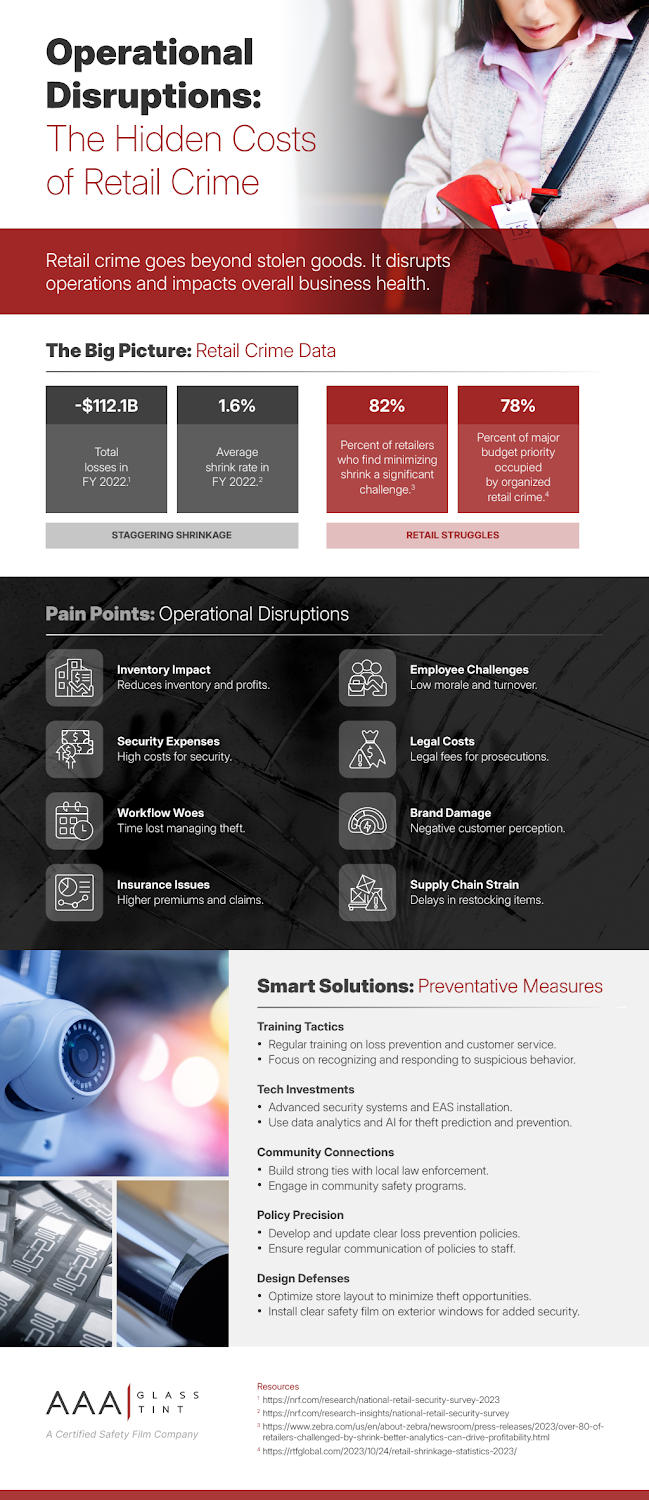Retail crime is often perceived through the lens of shoplifting incidents or high-profile thefts caught on camera. However, the true cost of retail crime goes far beyond stolen merchandise. Hidden beneath the surface lies a complex web of financial losses, operational disruptions, and psychological impacts that affect businesses, employees, and customers alike.
The National Retail Federation estimates that retail crime costs the U.S. retail industry tens of billions of dollars annually. These losses aren’t just absorbed by retailers—they are passed down to consumers in the form of higher prices. When products are stolen, companies must compensate for the losses by increasing prices to maintain their profit margins. Over time, this inflates the cost of everyday goods for honest shoppers, effectively turning everyone into victims of retail crime.
Operationally, the effects are even more far-reaching. Retailers are forced to invest heavily in security measures such as surveillance systems, loss prevention personnel, alarm systems, and physical deterrents. One such deterrent is commercial privacy film, often used on storefront windows to obscure the view of high-value inventory from potential thieves. While effective, these solutions represent ongoing costs that divert resources away from other vital business functions like employee development, customer service, and innovation.
Retail crime also takes a toll on employee morale and safety. Frontline workers are often the first to encounter theft or violent incidents, leading to anxiety and decreased job satisfaction. In extreme cases, employees have been injured or traumatized, prompting higher turnover and increased recruitment and training expenses for businesses. These human costs are seldom discussed but are among the most serious consequences of retail crime.
Moreover, organized retail crime (ORC) is growing in both scale and sophistication. Criminal groups exploit weaknesses in supply chains, return policies, and digital platforms, making it harder for retailers to safeguard their operations. In response, businesses must engage in advanced risk assessment and collaborate more closely with law enforcement and cybersecurity experts, further increasing overhead expenses.
Even communities suffer as retail crime can lead to store closures, particularly in vulnerable neighborhoods. When businesses shut their doors, they leave behind economic voids—fewer jobs, reduced tax revenue, and diminished local commerce. This contributes to urban decay and creates a cycle that’s difficult to break.
Ultimately, retail crime is not a victimless offense. It is a pervasive issue that affects every layer of the retail ecosystem. Understanding the hidden costs is essential for policymakers, business owners, and consumers alike to support more effective prevention strategies and create safer, more sustainable retail environments.

